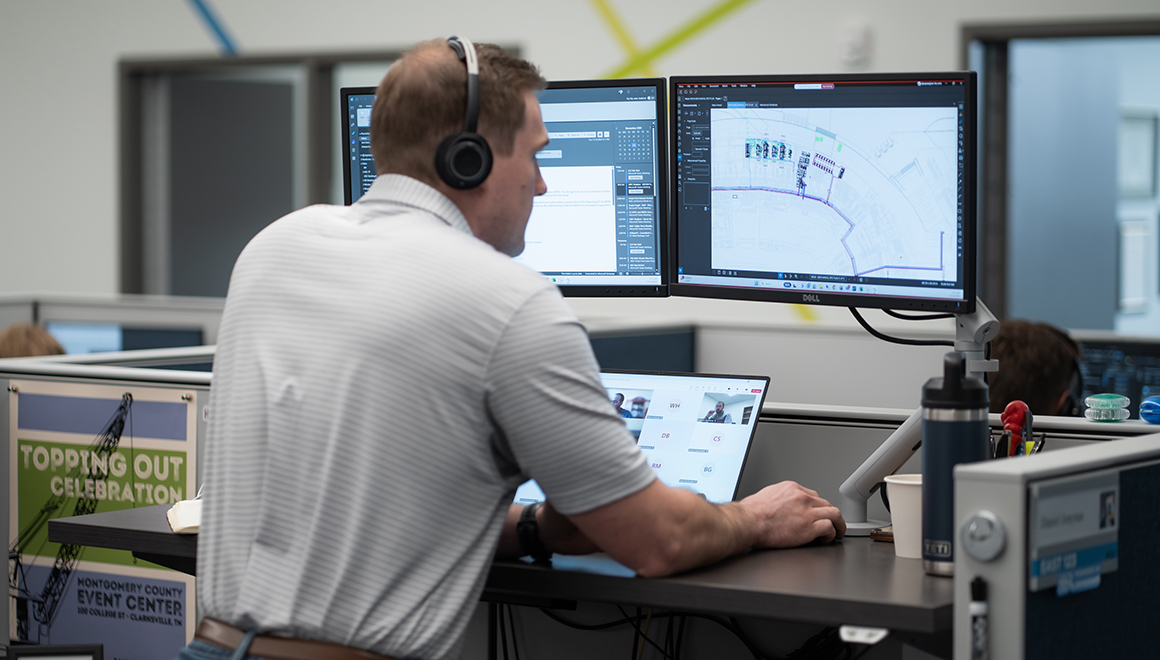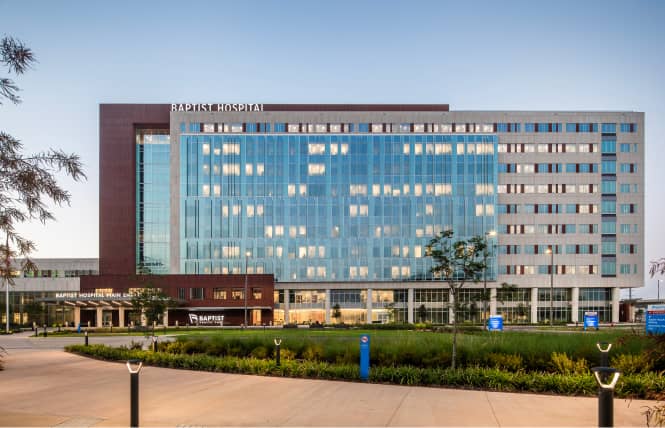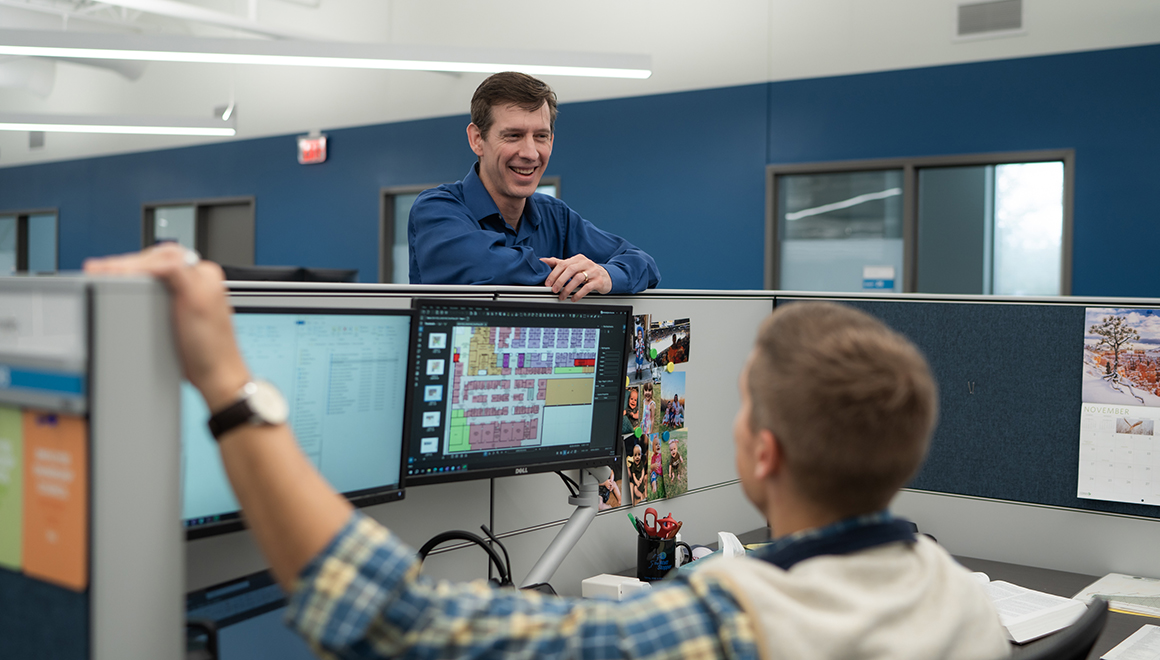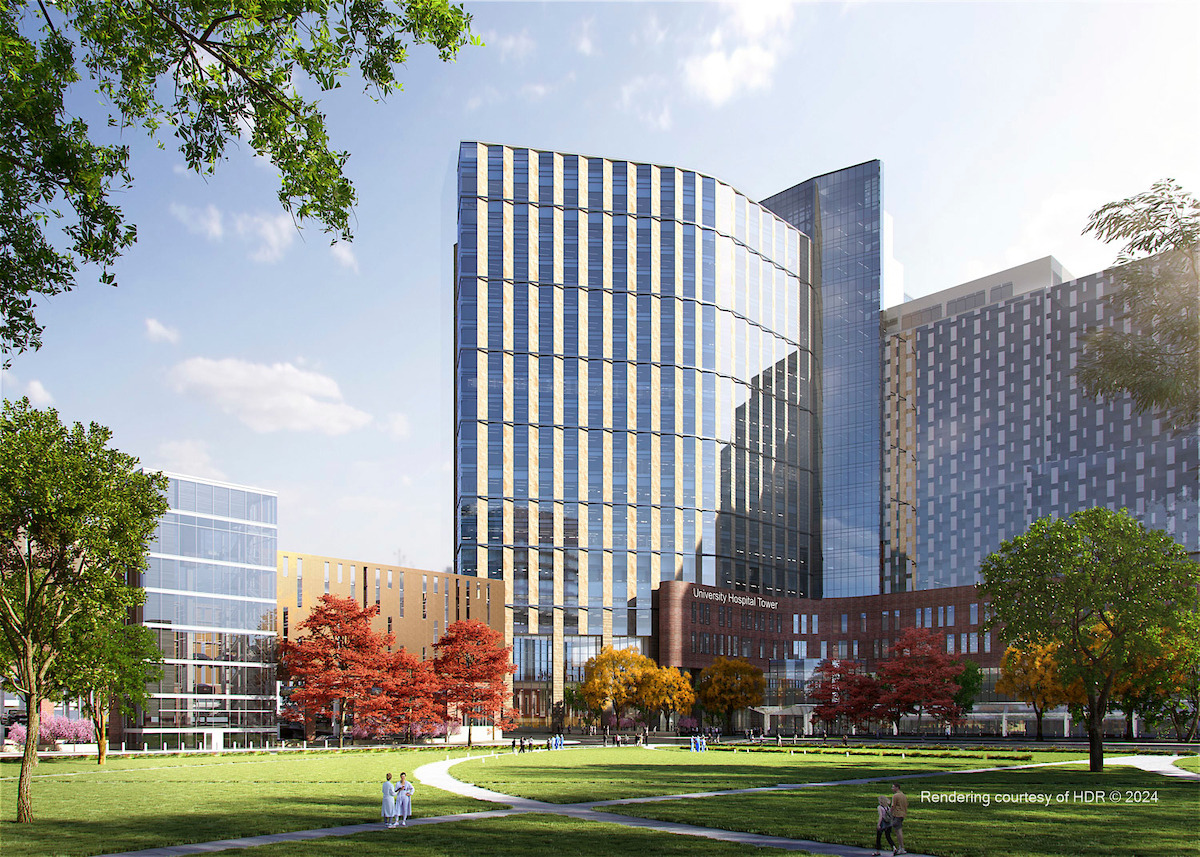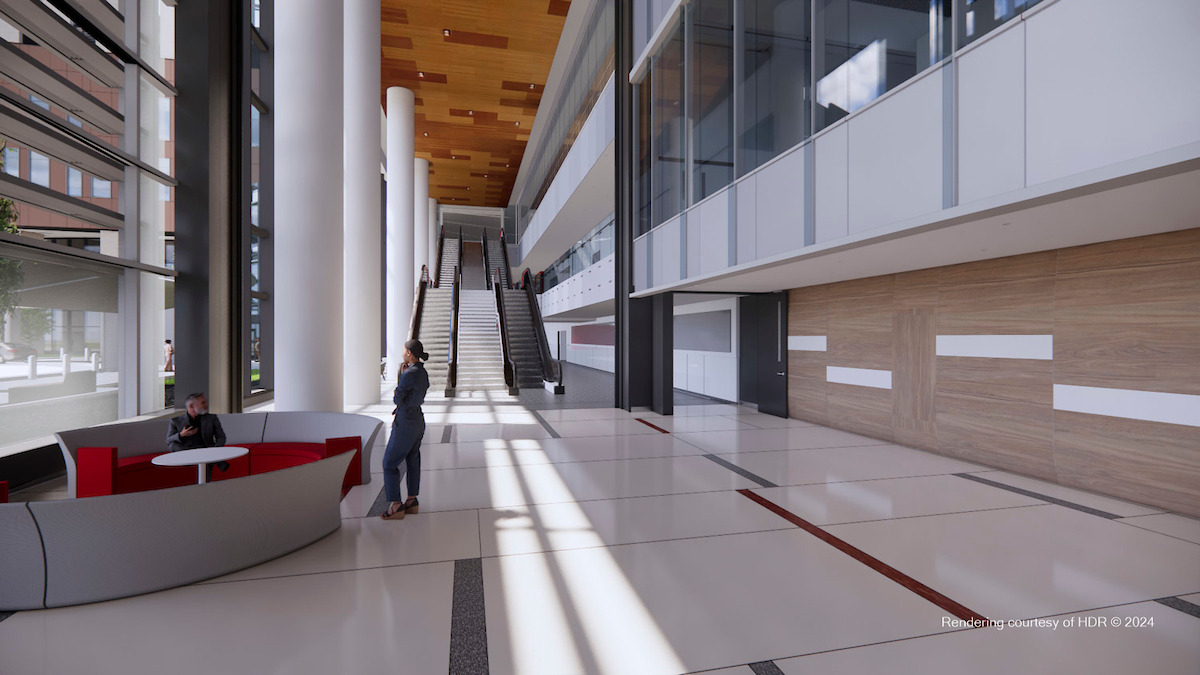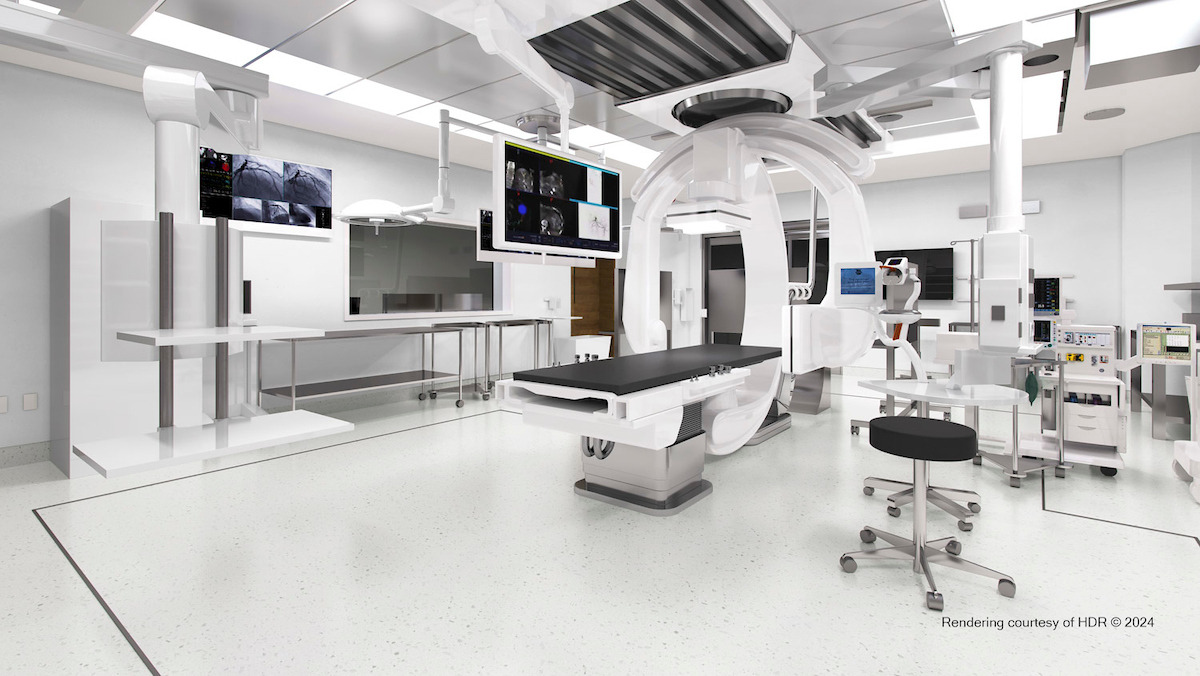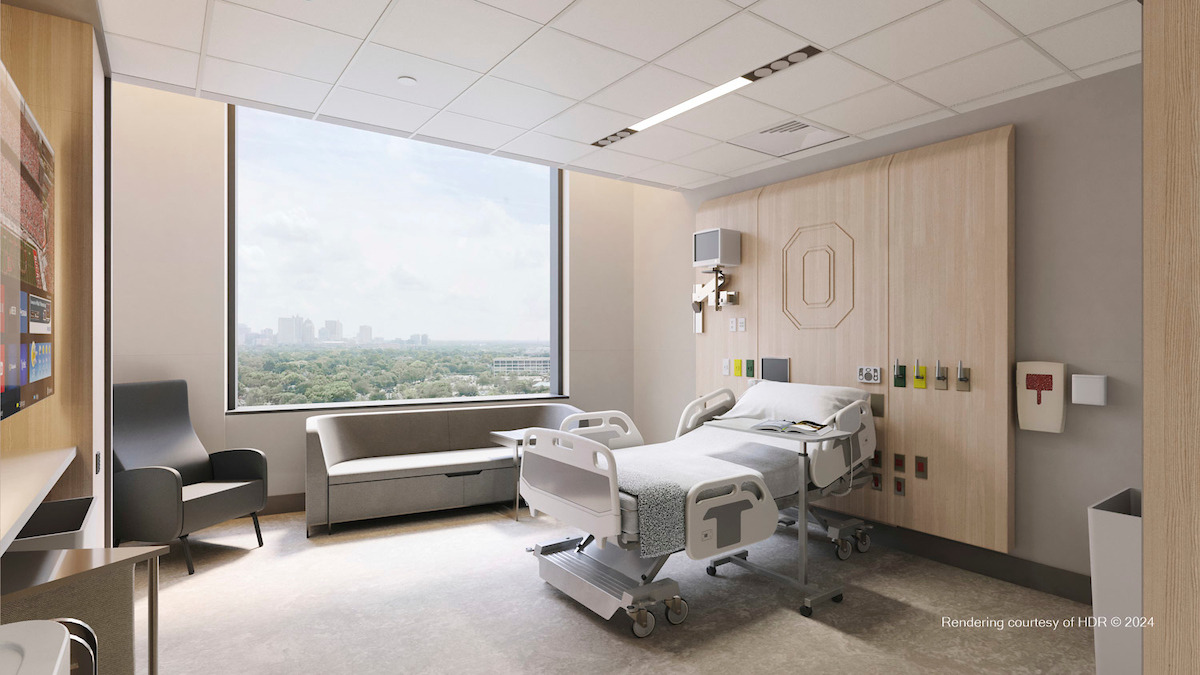"A place of healing, hope, and optimism”
Facilitating a leading academic medical center’s innovative vision for its new 1.9 million SF inpatient tower.
At 1.9 million SF and 820 beds, the Wexner Medical Center’s new inpatient tower is The Ohio State University’s largest capital project to date. To echo OSU’s own words, the new tower “will be a place of healing, hope, and optimism” once completed in 2026—combining modern educational spaces, leading-edge research, and outstanding clinical training with a focus on world-class, patient-centered care.
Each element of The Ohio State University’s Wexner Medical Center (OSU WMC) facility design has been thoughtfully planned with a particular focus on innovation. Teamed with a local Ohio-based low voltage engineering firm, SSR partnered with OSU in seamlessly delivering the latest advancements in infrastructure, access control, video surveillance, clinical, and specialty technology systems.
The medical center offers a range of services and spaces including diagnostic treatment, emergency department, imaging, operating rooms, critical care, med/surg beds, NICU, outdoor park area, indoor cafe, conference facilities, and retail/food services.
A Wide-Spread Technology Scope
Thoughtful facility design begins with knowing your audience. The OSU WMC’s audience is a sizeable and diverse user group who require essential services that will be largely executed through technology decisions. Needing to manage these decisions across a wide range of audiovisual, clinical, and facility systems, the OSU WMC project team asked SSR to facilitate and lead design planning efforts for essential technology use cases.
The following briefly outlines our team’s strategic scope:
- Audiovisual Systems
-
- Conference rooms, interactives, TVs, schedule boards, patient edutainment, video teleconferencing, and overhead music
- Clinical Systems
-
- Nurse call, intercommunication imaging/procedure spaces, control rooms, surgical video integration, sterile processing, instrument management, physiological monitoring, telemetry, dietary, nutrition management, imaging, alarm management, clinical devices, and workflow management
- Facility Systems
-
- Sound masking, time clock, point of sale, temperature monitoring, pneumatic tube, automatic trash/linen, elevator/conveying, and autonomous mobile vehicles
- Use Cases
-
- Video footwall, real-time location solution, wayfinding, command center, instant teaming, seamless discharge, smart arrival, post visit, visitor management, and rounding
- IT Equipment
-
- Desktop equipment, wall-mounted cabinets, peripherals, clinical communications solutions, and wireless devices
To facilitate an evidence-based design process, our technology leadership choreographed the use case technologies to pull together resources, communicate conceptual visioning intent, architect environmental workflow conversations, introduce automation opportunities, and secure the latest advancements in technology by deferring any final vendor model selection decisions until the last responsible moment. Our phased approach allowed the comprehensive project team to advance the design schedule while emerging technologies matured. From owner-identified technology use cases, our consultants managed the evaluation and incorporation of these innovation opportunities into a built environment infrastructure that scales with the evolving technology selection timelines.
Reimagining a Footwall into a Digital Command Center
With a desire to raise the bar in healthcare technological solutions, the OSU WMC analyzed emerging technologies of other national academic medical centers and prioritized new use cases. Topping this new use case list was optimizing the footwall area of a patient room as a digital command center for patients, their families, and clinical and support staff.
The digital footwall allows for real-time information, entertainment, and other content to be simultaneously managed on a unified large display that covers a significant portion of the footwall area and replaces the traditional TV display, care board, and other standard devices. The design directly connects patients to healthcare information, their clinical team, and a robust patient engagement portal with the goal of both empowering patients and reducing staff load.
Coordinating the digital footwall design required a unique comprehension of technical capabilities, performance criteria, procurement selection, and other attributes executed solely by existing enterprise solutions. Many times, these enterprise solutions were external to the program scope of work and required system modifications outside the capital program project controls.
As central Ohio’s growing population faces a choice of regional healthcare providers, the OSU WMC’s digital footwall distinguishes the facility, provides unique branding/marketing opportunities, and marks OSU’s investment into the evolution of the patient experience.
Read more about our team’s work with the OSU WMC’s digital footwall in this case study.
Translating a Vision into a Reality
Healthcare designers know it is always a challenge to integrate a project’s visioning design documentation into a constructible program.
Using the digital footwall as an example, our team faced the question: How do you turn a feature-rich, innovative vision into a foundational technological element in more than 800 patient rooms?
Working with the IT solution owner, it became clear that effectively messaging the use case value to current and future stakeholders would be vital. To set the course for the use case discovery phase, our team created a baseline infographic to translate fundamental integrations and frame the footwall’s future potential. By developing a one-page diagram, a standardized use case orientation starting point was established for current and future team members.
Additionally, internal and external program dependencies were visible to message owner IT project dependencies, integration discovery questions gained clarity to better articulate essential performance criteria, technology scope gaps and duplication opportunities pulled forward to capture cost savings, and a mock-up visual aid tool set the framework for department specialty data gathering exercises.
To collectively establish the use case problem statement, an exercise was conducted to catalogue key subgroups and populate them with the appropriate technology system owners for in-depth discovery research and performance definition. Beyond the traditional split between hardware and software, the team outlined several vital categories of integration and content, hardware and devices, and system administration.
Marrying MEQ and Tech
In addition to foundational design software tools like Revit, BIM360, and Bluebeam Revu, we had the task of collaborating with all the non-design stakeholders across nearly every operational department. Working with the owner’s IT leadership, we effectively introduced many familiar project management programs such as Box cloud storage, Trello, and dRofus, a planning and data management tool.
World-Class Care Starting in Ohio
With central Ohio’s population expected to climb to three million people by 2050, the OSC WMC’s new tower will enable the medical center to provide critical care for this expanding community. Offering world-class care, The Ohio State University’s Wexner Medical Center is elevating patient experience with investments in emerging healthcare technology that rival the nation’s leading academic healthcare facilities.
